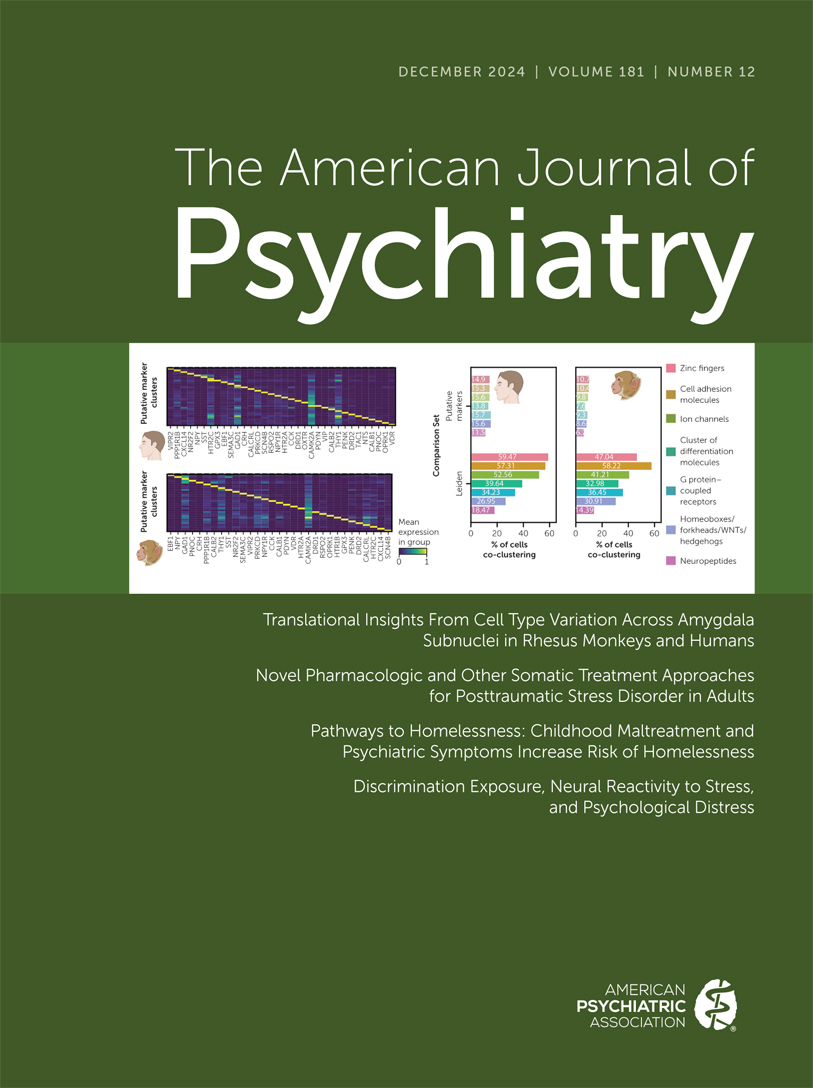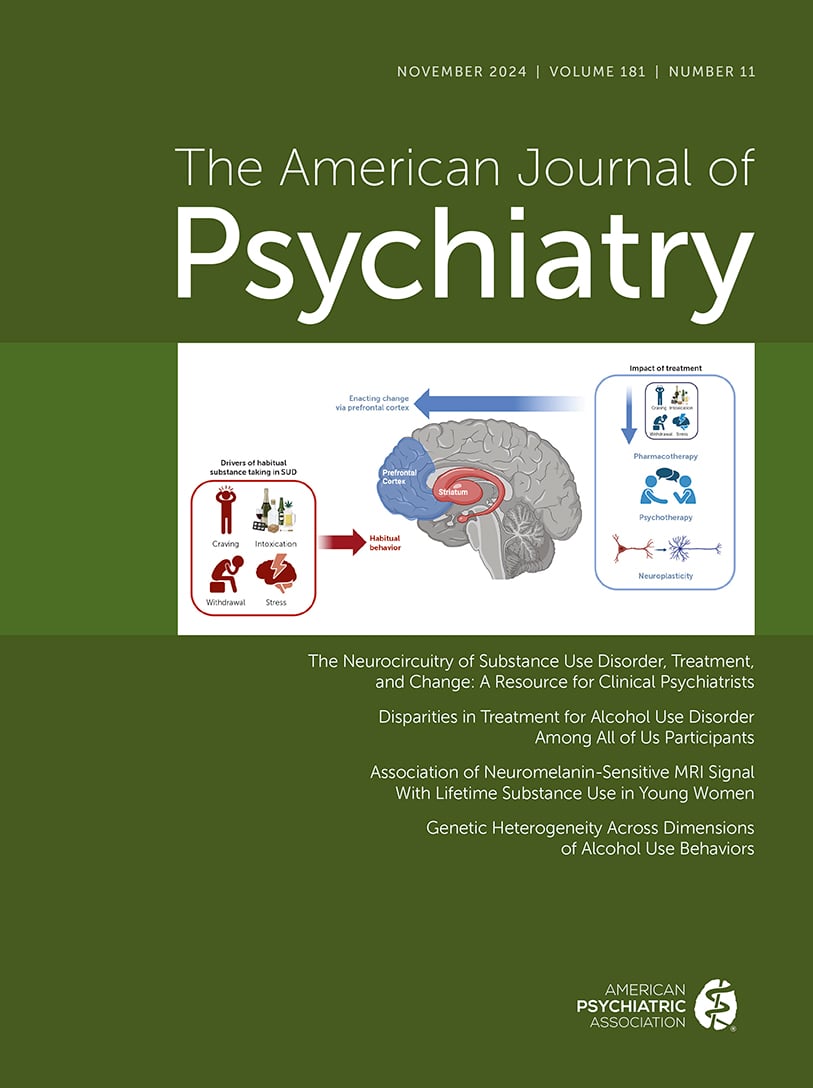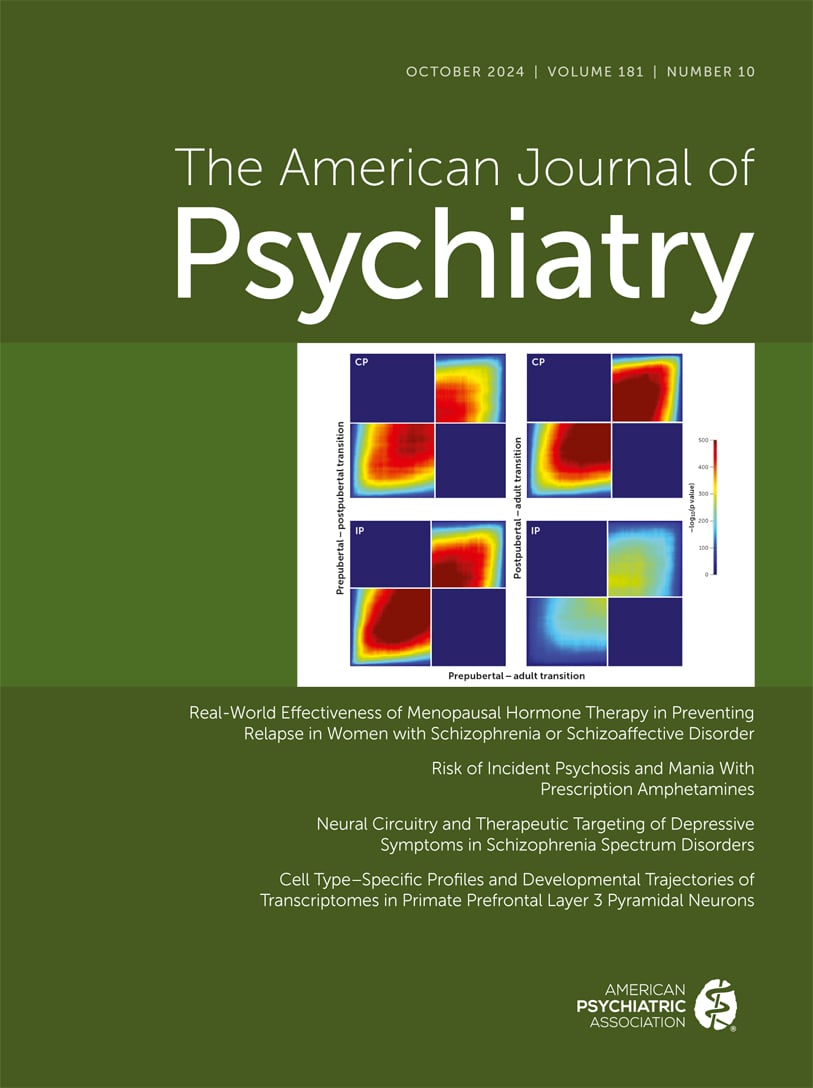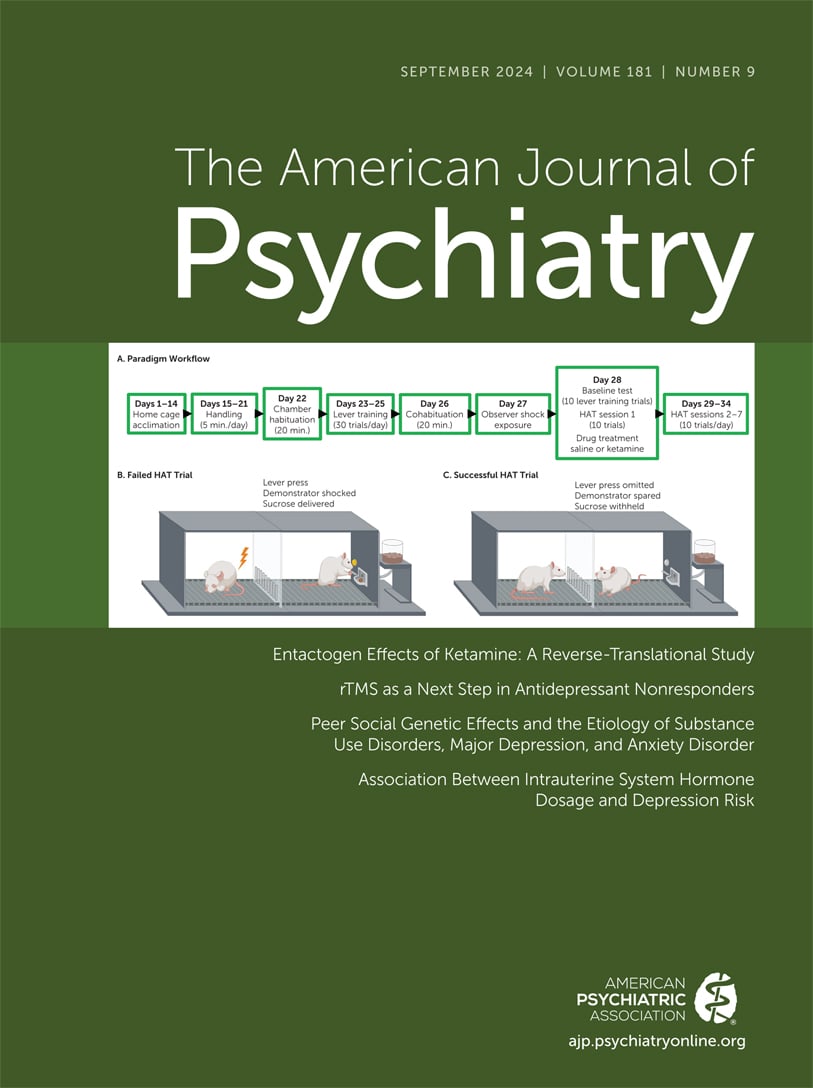American Journal of Psychiatry
- Volume 134
- Number 9
- September 1977
Publication date: 01 September 1977
Pages959–965The author identifies the direction of changes in health policy in the United States that need to be taken into account by the health professions in their dealings with government. She discusses three areas in which these changes will call for adjustment ...
https://doi.org/10.1176/ajp.134.9.959Publication date: 01 September 1977
Pages966–969Schizophrenia and posterior aphasia are easily cross-diagnosed, primarily because of similarities in verbal output, i.e., vagueness, looseness of association, and apparent confusion. Tape-recorded interviews with 8 posterior aphasics and 10 "loose" ...
https://doi.org/10.1176/ajp.134.9.966Publication date: 01 September 1977
Pages970–973The authors describe 19 couples who returned for additional treatment after traditional short-term sex therapy. Eight couples required additional short-term sex therapy, and 11 couples were treated primarily with individual psychoanalytic psychotherapy or ...
https://doi.org/10.1176/ajp.134.9.970Publication date: 01 September 1977
Pages974–978The authors trace three phases in the course of anorexia nervosa and compare its physical and psychological symptoms with those of starvation. Phase I, which may occur months or years before the illness, usually includes precipitating events that result ...
https://doi.org/10.1176/ajp.134.9.974Publication date: 01 September 1977
Pages979–983The author describes the dialectical struggle in psychiatric treatment between those who advocate maximum liberty in the management of the mentally disordered and those who believe such patients will benefit more from firm guidance and discipline. He uses ...
https://doi.org/10.1176/ajp.134.9.979Publication date: 01 September 1977
Pages984–987The authors describe the development of a curriculum focused on teaching residents in family practice how to recognize and deal with the psychological issues presented by patients and by their own reactions to patients. They describe how teachers in a ...
https://doi.org/10.1176/ajp.134.9.984Publication date: 01 September 1977
Pages988–990The authors investigated closeness and other variables measuring depression in 22 identical and 13 fraternal twin pairs. Each twin rated him/herself on a two-part questionnaire; part 1 included questions on demographic characteristics and the twin ...
https://doi.org/10.1176/ajp.134.9.988Publication date: 01 September 1977
Pages991–996The author discusses the myths of the ECT process--that shock and the convulsion are essential, memory loss and brain damage are inescapable, and little is known of the process--and assesses the fallacies in these ideas. Present views of the ECT process ...
https://doi.org/10.1176/ajp.134.9.991Publication date: 01 September 1977
Pages997–1001The author reviews several studies that clarify the nature of the memory loss associated with ECT. Bilateral ECT produced greater anterograde memory loss than right unilateral ECT and more extensive retrograde amnesia than unilateral ECT. Reactivating ...
https://doi.org/10.1176/ajp.134.9.997Publication date: 01 September 1977
Pages1001–1005The author reports on studies of the comparative efficacy of ECT, the newer psychotropic drugs, and combinations of both in the treatment of depression and schizophrenia. He concludes that ECT is indicated for acutely suicidal and other severely impaired ...
https://doi.org/10.1176/ajp.134.9.1001Publication date: 01 September 1977
Pages1006–1009The author discusses the right to receive ECT and describes voluntary and involuntary patients for whom the treatment seemed both ethical and humane. The right to refuse ECT must be respected in competent patients. However, problems arise when patients' ...
https://doi.org/10.1176/ajp.134.9.1006Publication date: 01 September 1977
Pages1010–1014The author reviews reports of neuropathology resulting from electroconvulsive therapy in experimental animals and humans. Although findings of petechial hemorrhage, gliosis, and neuronal loss were well established in the decade following the introduction ...
https://doi.org/10.1176/ajp.134.9.1010Publication date: 01 September 1977
Pages1020–1025The authors studies the hospital records of 109 delinquent children and a matched comparison group of 109 nondelinquent children. The number, reasons for, and timing of hospital contacts significantly differentiated the delinquent from the nondelinquent ...
https://doi.org/10.1176/ajp.134.9.1020Publication date: 01 September 1977
Pages1025–1027A 12-year-old boy who had suffered from severe schizophrenia for 8 years developed myasthenia gravis. Both disorders were treated simultaneously and successfully with neostigmine bromide. The authors suggest that these two disorders may in some cases be ...
https://doi.org/10.1176/ajp.134.9.1025Publication date: 01 September 1977
Pages1028–1031The authors studied pituitary thyrotropin, i.e., thyroid-stimulating hormone (TSH), response to thyrotropin-releasing hormone (TRH) in patients with primary affective disorder. There were no overall differences between either depressed or manic patients ...
https://doi.org/10.1176/ajp.134.9.1028Publication date: 01 September 1977
Pages1032–1034The authors describe two cases of tardive dyskinesia in which severe axial dystonia and intense facial grimacing produced marked discomfort as well as social and physical disability. Both patients experienced the onset of psychiatric symptoms as young ...
https://doi.org/10.1176/ajp.134.9.1032Article
Article
Article
Article
Article
Article
Past Issues
View Issues Archive
Vol. 181 | No. 12

Vol. 181 | No. 11

Vol. 181 | No. 10
